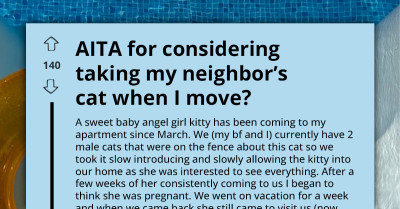Meet The Hummingbird, The Only Bird In The Whole World That Has The Ability To Fly Backwards
If you've ever witnessed a hummingbird hovering, you may have been in awe of its extraordinary physical prowess. In fact, one of a hummingbird's most instinctive behaviors is hovering.
A hummingbird that hovers is literally suspended in midair; although it may appear to be still, its wings are actually beating rapidly. Hummingbirds occasionally hover while feeding, but they seem to favor perching.
This is probably because hovering uses more energy, which makes it less effective. Their distinctive flight pattern, which resembles that of flying insects more than other birds, holds the key.
The way that most birds flap their wings is in an up-and-down motion, but a hummingbird's pattern involves much more motion. Since this flight pattern is very taxing on hummingbird wings, they are extremely strong and stiff to prevent breaking.
Hummingbirds twist their wings as they flap both forward and backward. As they hover, the majority of the weight on their wings is supported by their wrists.
Because of this forward-backward flapping pattern, the hummingbird can achieve about 25% lift on the upstroke and approximately 75% lift during the downstroke. Hummingbirds are also able to fly in reverse.
In actuality, they are the only bird species worldwide capable of doing this. The same flight abilities that enable hummingbirds to hover also allow them to fly backward.
Again, their distinctive flapping motion allows them not only to hover but also to make small corrections to move in any direction.
Redditor u/SingLikeTinaTurner has this interesting piece of information to share with the TodayILearned subreddit group

This is the hummingbird and it is the only bird that can fly backwards

The hummingbird might just fly away if danger approaches or if it feels the need to flee for any reason. If it were perched, it would take longer to lift off, so this saves time.
Additionally, it makes it easier and quicker for the hummingbird to move up, down, sideways, backward, or forward than it would be able to if it were starting from a perched position.
Here are what redditors had to say in regard to the information

The Fascinating Biology of Hummingbirds
This article highlights the unique flying abilities of hummingbirds, which offer an exciting window into evolutionary biology. Research from the University of California, Berkeley, indicates that the ability to fly backward is a rare trait among birds, which has evolved due to specific ecological pressures. This adaptation allows hummingbirds to navigate complex environments efficiently, showcasing the intricate relationship between biology and behavior.
Understanding these behaviors can enhance our appreciation for wildlife and the delicate balance of ecosystems.
According to this Redditor, hummingbirds can't walk

Lol... It's the second Redditor's comment for me

Other birds, as a defense mechanism, can fly backwards for a short, limited time

The energy conservation strategies employed by hummingbirds also provide valuable lessons about efficiency and resource management. Research published in the Journal of Avian Biology suggests that these birds often engage in energy-saving behaviors to thrive in their environments. By recognizing the importance of energy conservation, individuals can apply similar principles to their daily lives, fostering sustainable habits.
Learning from nature can inspire us to adopt more mindful practices in our interactions with the environment.
They flew back and forth, up and down, all over

According to this Redditor, the Scopus Wopus flies backwards because it doesn't like the wind in its face

For this Redditor, it's just a dragonfly

The Role of Biodiversity in Ecosystem Health
The presence of diverse species, like hummingbirds, is crucial for maintaining healthy ecosystems. Studies from the World Wildlife Fund indicate that biodiversity enhances ecosystem resilience, allowing for better adaptation to environmental changes. This underscores the importance of protecting habitats that support a wide range of species.
By promoting biodiversity, individuals can contribute to the sustainability of their local environments, ensuring that future generations can enjoy the benefits of healthy ecosystems.
I love the sound of that

Okay

Hummingbirds are no different from other birds in that they all produce some noise when flying. The bird's wings cut through the air, making noise as they flap.
Hummingbirds hover because it allows them to quickly and easily change directions when they need to move. Share your thoughts about this bird in the comments section below.
Engaging with nature through activities like birdwatching can also enhance psychological well-being. Research from the University of Exeter highlights that spending time in nature can reduce stress and improve mood. By actively participating in outdoor activities, individuals can cultivate a sense of connection with the environment, which can lead to improved mental health outcomes.
Encouraging community involvement in wildlife conservation can foster a collective sense of responsibility, further enriching the psychological benefits of engaging with nature.
Psychological Analysis
This article illustrates the remarkable adaptations of hummingbirds, highlighting the importance of biodiversity. Their ability to fly backward not only serves ecological functions but also symbolizes the intricate connections within ecosystems. By appreciating these unique traits, individuals can develop a deeper understanding of the natural world and the importance of conservation.
Analysis generated by AI
Analysis & Alternative Approaches
The unique abilities of hummingbirds offer profound insights into the interconnectedness of biology and behavior. According to the Journal of Ecology, preserving these species is vital for maintaining biodiversity and ecosystem health. By fostering a connection with nature, individuals can enhance their well-being while contributing to environmental sustainability.



